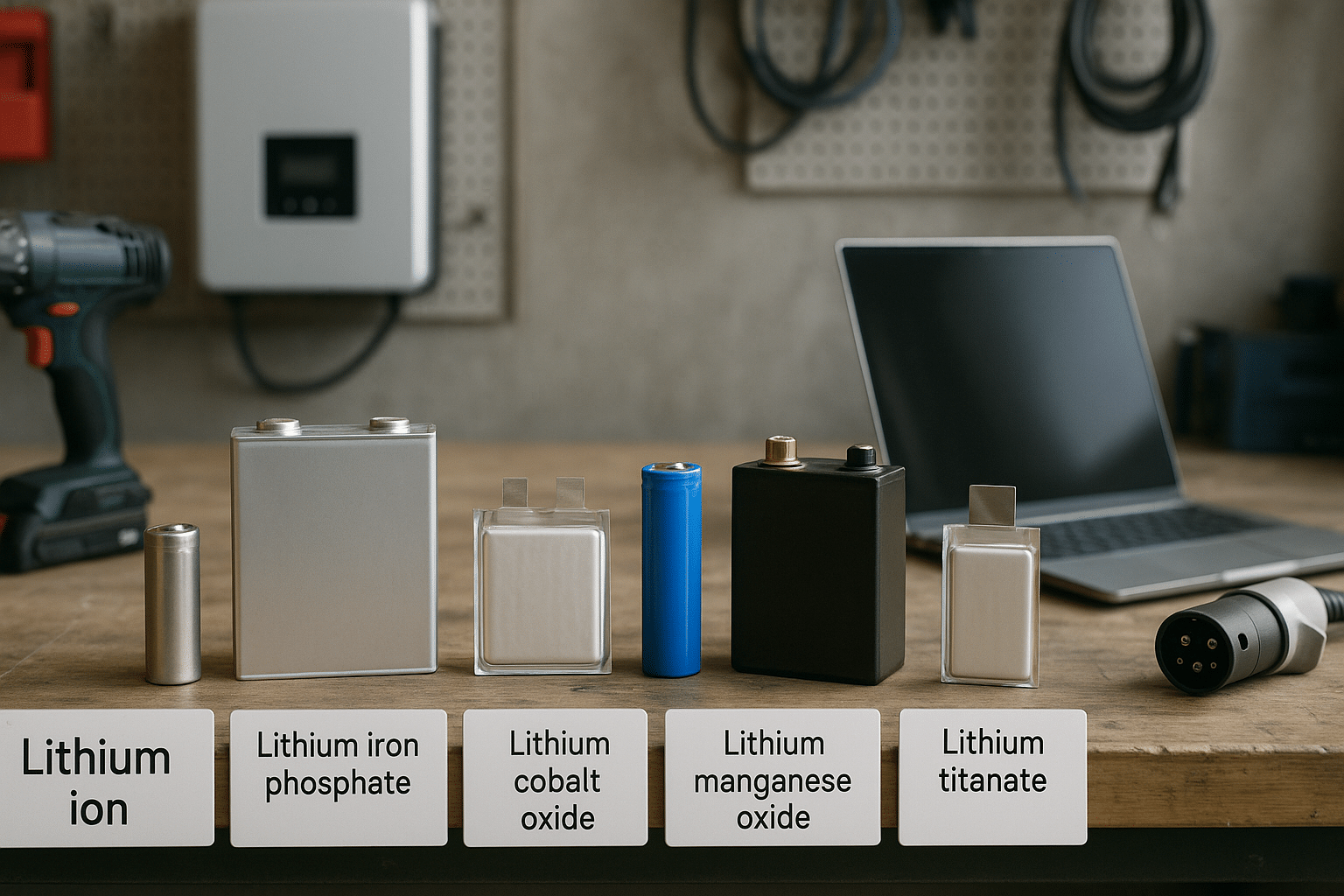
What Are Lithium Batteries? Essential Facts You Shouldn’t Overlook
Learn how LITHIUM BATTERIES power your everyday tech. From BATTERY LIFE to SAFETY, this guide explains key facts about LITHIUM and LITHIUM-ION BATTERIES that matter.
Last Updated on 06/10/2025
Lithium batteries are a widely used type of battery found in everyday devices like phones, laptops, and tools. Known for their long battery life and reliability, they power much of today’s technology. This article explains what lithium batteries are, how they work, and which type of battery suits which use.
What are lithium batteries and how do they work?
Lithium batteries are rechargeable batteries that store and release energy using lithium ions. During use, ions move from the anode to the cathode through an electrolyte, creating electric current. They’re lightweight, have high energy density, and are commonly used in laptops, phones, electric vehicles, and other portable electronics.
Common Uses for Lithium Batteries
- Powering laptops, mobile phones, and other portable electronics
- Supplying energy to electric vehicles and hybrid cars
- Storing solar power in home energy systems
- Fueling power tools that require high discharge rates
- Used in digital cameras and compact electronic devices
- Integrated into backup power supplies for critical systems
- Supporting grid energy storage and renewable power setups

Types of Lithium Batteries Explained
Not all lithium batteries are made the same. Each type of battery brings its own quirks, chemistry, and strengths. Lithium-ion batteries are the most common, especially in laptops and mobile phones, thanks to their high energy density and rechargeability. But beyond the familiar li-ion batteries, a whole world of lithium-based tech powers different needs.
Take lithium iron phosphate, for example. It’s a popular choice for electric vehicles and solar power systems due to its safety and long cycle life. Then there’s lithium cobalt oxide, known for packing a punch in small electronics—though it comes with a higher risk of battery fires if mistreated.
Other key players include lithium manganese oxide (good for power tools), lithium nickel manganese cobalt (NMC) with high energy densities, and lithium titanate, ideal for fast-charging applications. Choosing the right battery technology depends on how you use lithium and which traits—like stability, lifespan, or power—you value most. For standard options, see our batteries and chargers page.
How Lithium-Ion Batteries Work
Lithium-ion batteries don’t run on magic—they run on chemistry. Inside every li-ion battery are four key parts: anode, cathode, electrolyte, and separator. As the battery charges and discharges, lithium ions move between electrodes, generating electric current. That’s what powers your devices and keeps your electronics humming along nicely.
The electrolyte—a kind of chemical soup—acts as the medium for ion transfer. Meanwhile, the separator keeps the anode and cathode from touching (because no one wants a short circuit). This process of intercalation (chemistry speak for ion flow) is what gives lithium-ion batteries their rechargeability and efficient energy storage.
Because of their energy density, lithium-ion batteries are used in everything from mobile computing to electric vehicles. But it’s not all sunshine and volts: battery fires, self-discharge, and temperature sensitivity are concerns. Still, lithium ion battery technologies remain central in powering our connected world, from laptops to solar-powered energy storage systems.
Choosing the Right Type of Battery
With so many lithium battery types available, choosing the right one can feel like navigating a battery buffet. Do you want long battery life, high voltage, or safer chemistry? For light use in devices like digital cameras or laptops, lithium cobalt oxide or lithium-ion batteries are popular picks.
If you’re powering an electric vehicle or storing solar energy, lithium iron phosphate batteries or lithium nickel manganese cobalt oxides are better suited. They’re more stable, last longer, and handle higher power loads. Need rapid charging? Lithium titanate steps up—though it comes at a cost and lower energy density.
Ultimately, the type of battery you choose should match your energy needs and usage pattern. Think about charge cycle requirements, risk tolerance, and whether you need portability or stationary storage. For help with everyday devices, browse batteries suitable for your tech and compare what different batteries are used for in real-world settings.
Comparison of Common Lithium Battery Types
| Battery Type | Main Use | Key Strength | Weakness |
|---|---|---|---|
| Lithium-ion (Li-ion) | Laptops, mobile phones | High energy density | Risk of overheating |
| Lithium iron phosphate | Electric vehicles, solar storage | Safe and long lifespan | Lower energy density |
| Lithium cobalt oxide | Digital cameras, electronics | Compact with strong output | Higher fire risk |
| Lithium manganese oxide | Power tools | Stable and fast discharge | Shorter lifespan |
| Lithium nickel manganese cobalt | Electric vehicles | High power and energy | Expensive to produce |
| Lithium titanate | Rapid-charging applications | Fast charging, long cycle life | Lower energy density |
Conclusion
Lithium batteries power much of our daily life, from mobile phones to electric vehicles. Understanding how lithium-ion batteries work and the differences between battery types helps you make smarter, safer choices—whether you’re focused on performance, cost-efficiency, or environmental impact.
At Viking, we bring decades of experience in workplace solutions and energy-saving technologies. If you’re selecting batteries for your office or home setup, we’re here to help you choose the right solution—one that supports productivity and sustainability without compromising on reliability or value.
Frequently Asked Questions
What is a lithium battery made of?
A lithium battery typically consists of an anode, cathode, electrolyte, and a separator. The anode is usually made of graphite, while the cathode often contains lithium metal oxides like lithium cobalt oxide or lithium manganese oxide. The electrolyte allows lithium ions to flow between electrodes, enabling energy storage and discharge during use.
Why are lithium-ion batteries so widely used?
Lithium-ion batteries offer high energy densities, lightweight design, and long battery life, making them ideal for mobile phones, laptops, and electric vehicles. Their ability to recharge efficiently and maintain performance over many charge cycles makes them more practical than older battery types like lead–acid or nickel–cadmium for modern electronics and energy storage systems.
Are lithium batteries safe to use?
When handled properly, lithium batteries are generally safe. However, poor manufacturing, overcharging, or exposure to extreme heat can increase the risk of battery fires. Battery technologies now include safety features like temperature sensors and voltage regulation to reduce risk. Choosing quality-certified rechargeable batteries and battery chargers can improve safety significantly.
How much energy does a lithium battery store?
The amount of energy a lithium battery stores depends on its size and type. Measured in watt-hours or kilowatt-hours, lithium-ion batteries used in laptops typically store 40–100 watt-hours, while those in electric cars may exceed 60 kilowatt-hours. High energy density allows these batteries to store more power in a compact space.









